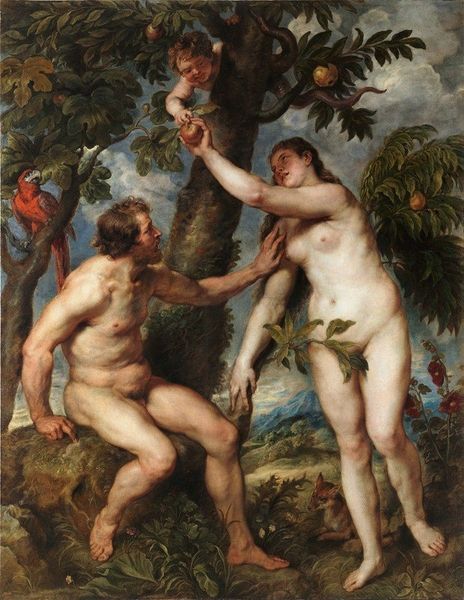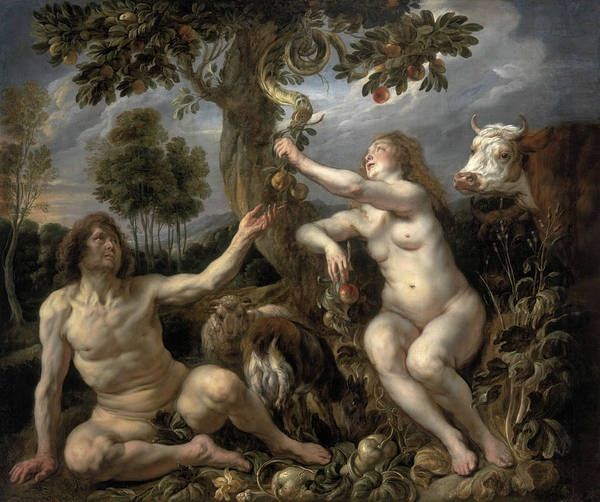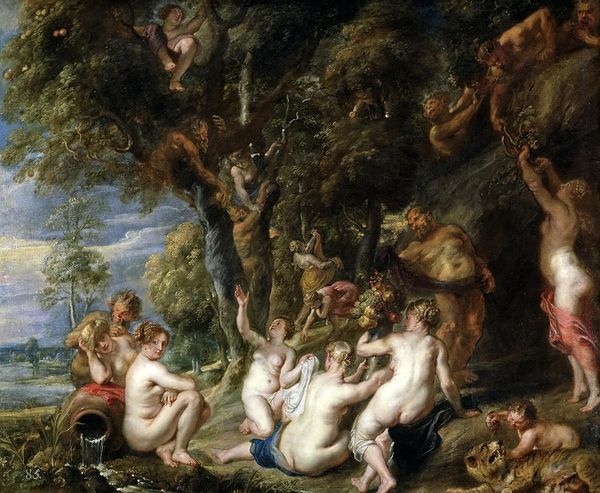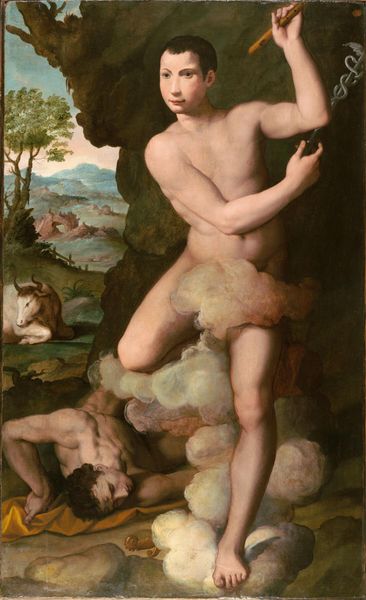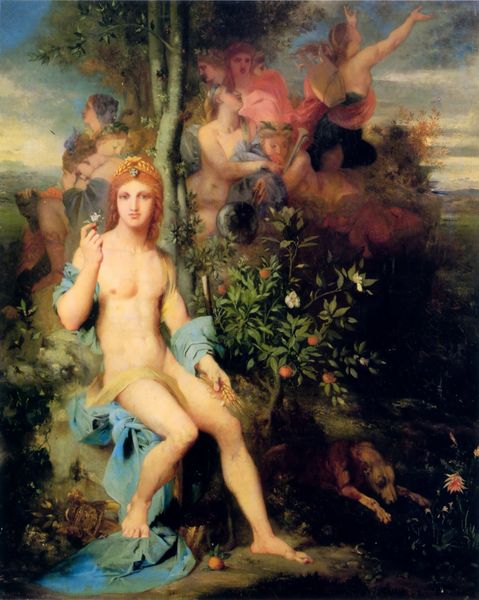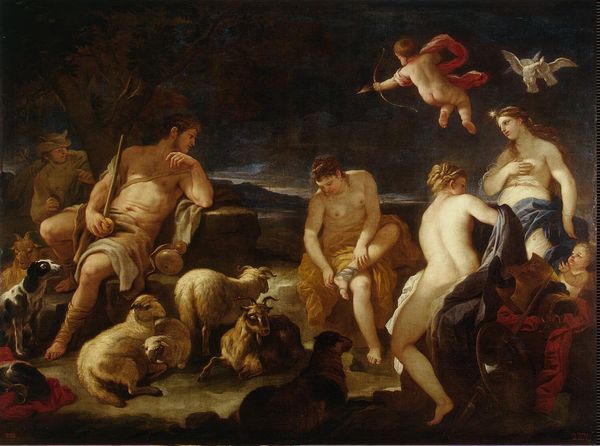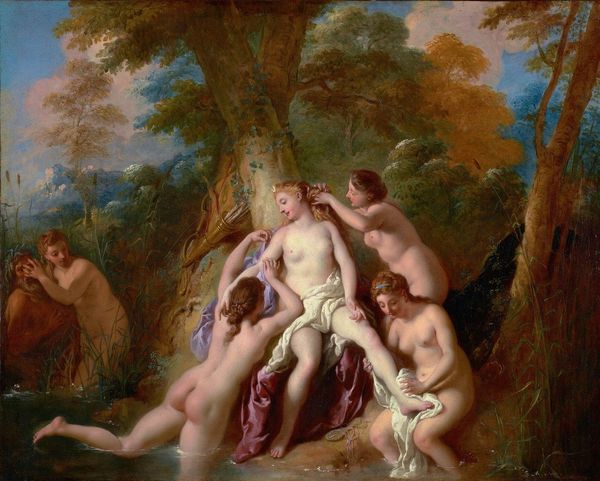
#
impressionistic
#
abstract painting
#
fantasy art
#
possibly oil pastel
#
neo expressionist
#
underpainting
#
painting painterly
#
abstract character
#
watercolor
#
expressionist
Copyright: Public Domain: Artvee
Curator: Here we have "The Expulsion Of Adam And Eve From The Garden Of Paradise," attributed to Alexandre Cabanel. It powerfully renders a key moment from Genesis. Editor: My immediate reaction is one of turmoil. The swirling forms of the angels contrast sharply with the still figures of Adam and Eve. You can feel the weight of their loss and the sheer brutality of their displacement. Curator: The materiality enhances this tension. Note the contrasting treatments. The celestial beings, rendered with dynamic, almost frantic brushstrokes, versus the comparatively smoother finish on the bodies of Adam and Eve, drawing a distinction between divine action and mortal consequence. Editor: Precisely. The historical context here is also crucial. This piece reflects a time when established religious and social orders were being rigorously questioned, and narratives of guilt and obedience re-examined through an emerging modern lens. Look how Eve is positioned, the locus of shame, bearing the weight of responsibility. Her agency, or lack thereof, within a patriarchal narrative is impossible to ignore. Curator: I find myself particularly interested in Cabanel’s working process, speculating on the potential layers of underpainting, particularly visible around the edges. It adds depth but also reveals the labour invested in conveying this drama. The painterly strokes contribute to an expressive, if somewhat conventional, aesthetic. Editor: It's difficult to dismiss that conventionality given the artwork’s setting and its historical reception. The visual vocabulary serves certain dominant cultural ideologies concerning gender, sin, and the consequences of disobedience, resonating far beyond a simple religious narrative. It speaks to ingrained societal expectations and moral judgements that are still fiercely relevant today. Curator: Indeed. Examining this piece through the lens of process makes the labor, the deliberate construction of this imagery all the more clear. How different production choices might alter this very famous scene. Editor: Analyzing through social frameworks makes these ingrained meanings ever more palpable, forcing reflection on why particular historical interpretations become enshrined and endlessly reproduced. This artwork embodies critical intersectional narratives regarding sin, culpability, gender and its historical implications.
Comments
No comments
Be the first to comment and join the conversation on the ultimate creative platform.
